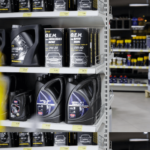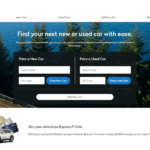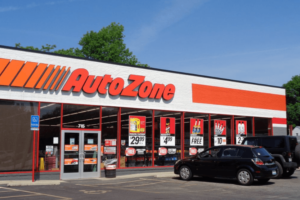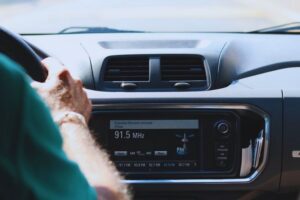When you need to jack your car up, where do you customarily position the jack? If you usually put it in the same spot, you might be jeopardizing the integrity of your car’s chassis. That spot is most likely the pinch weld, but what is it?
The pinch weld is the spot under your car that is located at the front. It is two metal parts that are welded together. During pinch welding, the outer frame of the vehicle is attached or welded to its inner body. It also forms the structure of the windows and windscreen.
In general, there is no problem in letting pinch welds rest on jack stands. However, make sure that you put it in the correct spot of the pinch weld. You should never place the jack on the spot where the fender overlaps. There is a possibility that the fender will bend if you do this.
Read on to learn more about pinch welds, what they are, how to use them, and the safety precautions.
What Is a Pinch Weld?

A pinch weld is created by welding two metal pieces to form a vehicle’s under chassis. It is usually the area at the front of the vehicle. It runs from behind the front wheel, going down to the rear tire and under the doors.
Pinch welding is also the process of attaching the outer frame of the car to its inner body. It refers to the part that forms the structure of the windows and the windscreen or windshield. Let me illustrate this process with an analogy:
Imagine clamping two pieces of paper instead of metal between the tips of your thumb and forefinger. That is practically how spot or pinch welding works. Spot or pinch welding is a common practice to assemble car parts since it is a cheap process.
Pinch weld is much cheaper and much easier than using nuts and bolts in clamping or attaching two pieces of metal. The process is also faster. However, most car assemblers leave these welds exposed because concealing them will considerably increase the vehicle’s cost.
You can use jacks to prop up your car in the pinch welds. But make sure that you are placing them in the right spots and not in areas where the fender overlaps because there is a likelihood that the fender will bend.
Where to Safely Put the Jack
If you need to jack up your car, be sure that you place it in the right spot. You can’t just put it anywhere the pinch weld, as you customarily do, because that will affect your car’s structural integrity.
If you know how the process of pinch welding is done, you will know why you need to be careful. Pinch welds are spot welds. These welds are formed by two electrodes pinching two pieces of sheet metal together. High voltage is applied to the metals so they will weld together.
Generally, pinch welds can also refer to the flange or ridge under the unibody of the vehicle. Many people consider them as normal or natural jacking points. Sometimes they are reinforced to make them structurally stronger.
If you examine this weld closely, you will see that it has a small mark. Car manufacturers place these marks on their cars to help owners and car mechanics identify the correct spot to place a jack. This is the strongest spot of the pinch weld.
However, some car makers don’t place this mark on their vehicles, leaving many car owners to put their jacks on whatever spot they choose. This practice will have uncertain results depending on the kind of metal used in the vehicle.
Overall, the pinch weld is not meant to be used as the place where you can prop your vehicle with a jack, no matter how strong its material is made of.
How to Create Pinch Welds
Basically, a pinch weld is created by joining two separate pieces of metal by putting one on top of the other. The welder then runs a high voltage current through the metals to melt them and create welded joints.
This process is also called spot welding. That means the metals are not joined or welded throughout their whole surface areas but only in selected spots. The process involves applying adhesives to the areas between the spots, after which the setup is reheated. The added energy will melt the adhesive and conceal the space in between the welds.
In a car assembly, pinch welds create the windscreen frame or windshield and run through the vehicle’s entire body. Pinch welds join the car’s outer body internal structure to create a protective covering.
They also run through the vehicle’s length, from the front to the rear wheel and under the doors. Overall, pinch welds are the elements that form the lower or under chassis of a vehicle.
Different Types of Pinch Welds
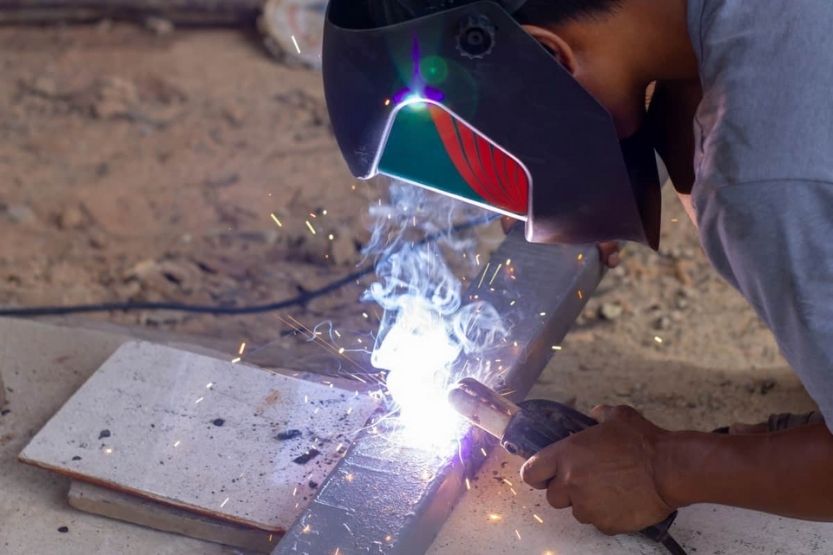
There are three classes of pinch welds. Each of these welds has a particular type of application:
1. Flat-Shaped
The flat-shaped pinch welds are some of the easiest welds to make. These kinds of welds are commonly used to join long horizontal sheets of metal used as protective coverings to the car’s machinery and equipment.
2. L-Shaped
This is the most commonly created weld in car assembly. L-shaped welds are the ones that you see running under the length of your car. To build this kind of weld, the welder works with two metal sheets that need to be joined together.
One of the metal sheets has an L shape. This means that this metal will be in a standing position precisely at 90 degrees. The other metal sheet will take the horizontal or flat position. The welder then places the two sheet metals side by side. They then join these metals using the spot welding process.
The welder then completes the welding process by applying adhesive to the spot welds. The final work will be an L-shaped joint. You will see this metal part on your car in the small flap of metal running along the length of the underside of your car.
3. Z-Shaped
The Z-shaped pinch weld is the most difficult to create since practically two L-shaped pinched welds joined together. In this process, the welder will build and join a diagonal metal sheet with an L shape at the top and another L shape metal at the bottom.
This type of pinch weld is usually seen at the top front of a vehicle. It is the type of pinch weld that creates the windshield or windscreen structure and the windows. The welder also adds a urethane bead on the diagonal surface to form the structure required to support the windshield or glass.
Z-shaped pinch welds created at the top of vehicles are not usually subjected to wear and tear. This is true when compared to the welds that are located on the car’s undersides. Welds at the bottom of the car are more likely to be damaged, especially by car owners who indiscriminately jack their car up in wherever spots they want to.
To ensure that the under-the-belly pinch welds will stay structurally good, you should lift your car using the factory-recommended jacking points.
Dangers of Jacking on Pinch Welds
Many car owners are not aware of the correct spots under their vehicles where they can place the jack in case they need to. Most often, they place the jack wherever it is convenient for them. Don’t do that because it is risking the structural integrity of your car.
Wrong placement of the jack will bring pressure to the pinch weld. The metal may fold over. As time goes on, water will accumulate in those folded bends encouraging rust to form. In due time, the structure of the vehicle will also fold up. The next time you jack your car on the same spot, your car may collapse.
How to Avoid Bending Pinch Welds
You need to know the proper place for the jack. So, where should you jack your car? Indiscriminately placing jack just anywhere in the pinch weld may bend it. If you bend it back in shape, it will even make the pinch weld weaker.
There are many ways you can avoid bending the pinch weld underneath your car. Here are some of them:
1. Use a Jack Pad
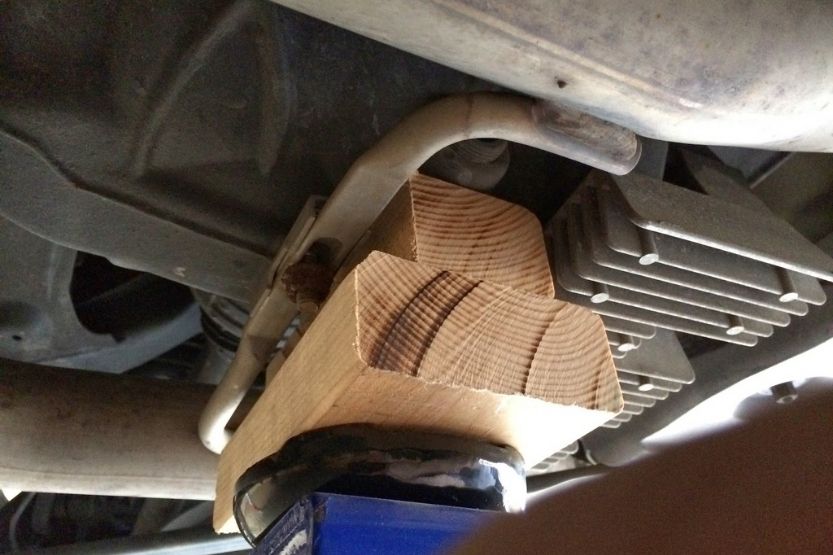
Instead of directly putting the jack on the pinch weld, use a jack pad. This will distribute the weight of the car evenly on the weld. If you don’t have the exact jack pad designed specifically for your car, you can use a wooden block or a thick piece of rubber. This will prevent overstressing the pinch weld spot where the jack is supporting the vehicle.
2. Use a Universal Pinch Weld Jack Pad
It isn’t easy to choose the right jack pad that suits your car well. If this is your problem, you can use a universal pinch weld jack pad such as the Byenins Large Slotted Universal Magnetic Jack Pad Weld Frame Rail Adapter:
Click here to see it on Amazon.
You will never have any difficulty using this pinch weld adapter because it can fit any car make and model. They actually come in two pieces, and you can use them on most unibody vehicles. These jack pads are absolutely safe to use and will never damage the pinch weld or the Rocker Panel.
They offer supreme holding strength because these universal jack pads have two neodymium rare earth magnets. Your car will be stable and secure while it’s up in the air.
Another universal pinch weld adapter that you may consider is the GeeWatom Universal Floor Jack Rubber Pad Jack Pad Adapter:
Click here to see it on Amazon.
This pinch weld jack adapter is made of heavy-duty construction rubber. It can carry a load of up to three tons.
But it can still provide more cushion and crush resistance. Actually, one pack of this product consists of two jack adapters. It can fit most vehicles and prevent rails from bending when using the jack to lift a car.
3. Vary Your Jacking Spots
One straightforward way of protecting your car’s pinch welds is to vary the spots whenever you need to jack your vehicle. Consistently using the same spot over and over again will surely weaken that spot. It will be an accident waiting to happen.
4. Follow the Recommendation of the Car Manufacturer
Another easy way to prolong your pinch welds’ life is to follow what the carmaker has recommended. They know the weaknesses and strengths of your car better than you. Don’t get into the habit of using the same jacking spot over and over again.
5. Don’t Use the Wrong Jack
Don’t lift your car with a jack that does not really fit the pinch welds on the undersides of your car. Most modern cars have specially designed jacking spots. However, even if you use the recommended jack points but use the wrong jack, the effect will be the same. You are still risking the structural integrity of your car. Buy the right jack that your car maker has recommended.
Conclusion: Pinch Weld
The spot underneath your car near the front is the spot where the pinch weld is located. It is where the different metal components of the vehicle are pieced or welded together. The process of pinch welding attaches or welds the car frame to its body.
This is the structure that forms the windows and the windscreen. You need to respect the pinch weld on the undersides of your car if you want to retain the structural integrity of your vehicle.
To maintain your car’s pinch weld, here are some tips you should consider:
- Use a Jack Pad
- Use a Universal Pinch Weld Jack Pad
- Vary Your Jacking Spots
- Follow the Recommendation of the Car Manufacturer
- Don’t Use the Wrong Jack
Related reading:




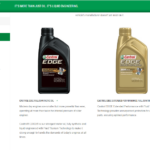
![How Do I Find Out What Options My Car Was Ordered With? [Using VIN] how do i find out what options my car was ordered with](https://roadsumo.com/wp-content/uploads/2021/06/how-do-i-find-out-what-options-my-car-was-ordered-with-150x150.jpg)
